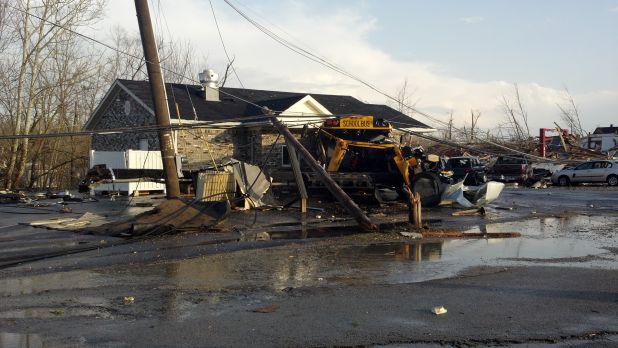Industry Heads Claim In Times Of Crisis, FM Enabled Smartphones Would Better Serve Public
The following are excerpts from a recent opinion piece co-authored by National Public Radio President Paul Haaga and American Public Media CEO Jon McTaggart.
Disasters strike every year in every corner of America…
Today, more than 90 percent of Americans own cellphones (http://www.pewresearch.org/fact-tank/2013/06/06/cell-phone-ownership-hits-91-of-adults), and approximately 60 percent of those are smartphones… (But) during emergencies, electric power grids often go down, disabling cellular phones and most Wi-Fi systems. Even when cellular or Wi-Fi networks remain functional, usage spikes and overloaded networks become useless.

By contrast, (local) radio stations usually have backup power and do not experience usage overload… (And during every hurricane, tornado, flood and wildfire) radio stations play an essential role in conveying information about response efforts, local relief supplies, evacuation orders, emergency routes, and where to find food, shelter and fuel, as well as on-the-ground, at-the-scene reporting to help affected communities understand and respond.
Every smartphone today contains an FM chip, but unlike in Europe, most in the U.S. are not activated. This will change if consumers put enough pressure on service providers to activate the chips in their phones.
There is no cost for manufacturers to activate the FM chips… it’s fair to say that many consumers are not yet aware of how little this would require of cellphone manufacturers and how great the benefit would be for consumers and listeners.
 Working in partnership with Sprint, Emmis CEO Jeff Smulyan and other commercial radio industry leaders have made it possible for most Sprint customers to activate NextRadio on their FM-enhanced phones, allowing users to access interactive FM radio – with local station branding, album art, and interactive promotions displayed on screen – without charging against a data plan. Someday soon, the same should be true for all service carriers, including AT&T, Verizon, and T-Mobile.
Working in partnership with Sprint, Emmis CEO Jeff Smulyan and other commercial radio industry leaders have made it possible for most Sprint customers to activate NextRadio on their FM-enhanced phones, allowing users to access interactive FM radio – with local station branding, album art, and interactive promotions displayed on screen – without charging against a data plan. Someday soon, the same should be true for all service carriers, including AT&T, Verizon, and T-Mobile.
Encourage your listeners to contact their cell carriers and smartphone manufacturers, urging them to install and activate FM chips in their cellphones and smartphones… carriers specify and order cellphones for their customers. They can require activated FM chips, but they won’t do so unless they know there is market demand.
…radio audiences expect to find us anywhere and at any time… FM chips in smartphones is another way to ensure that they’ll have access to vital information during times of emergency and crisis.
Last month, NPR’s Hagga and APM’s McTaggart sent a follow up letter directly to member stations.
